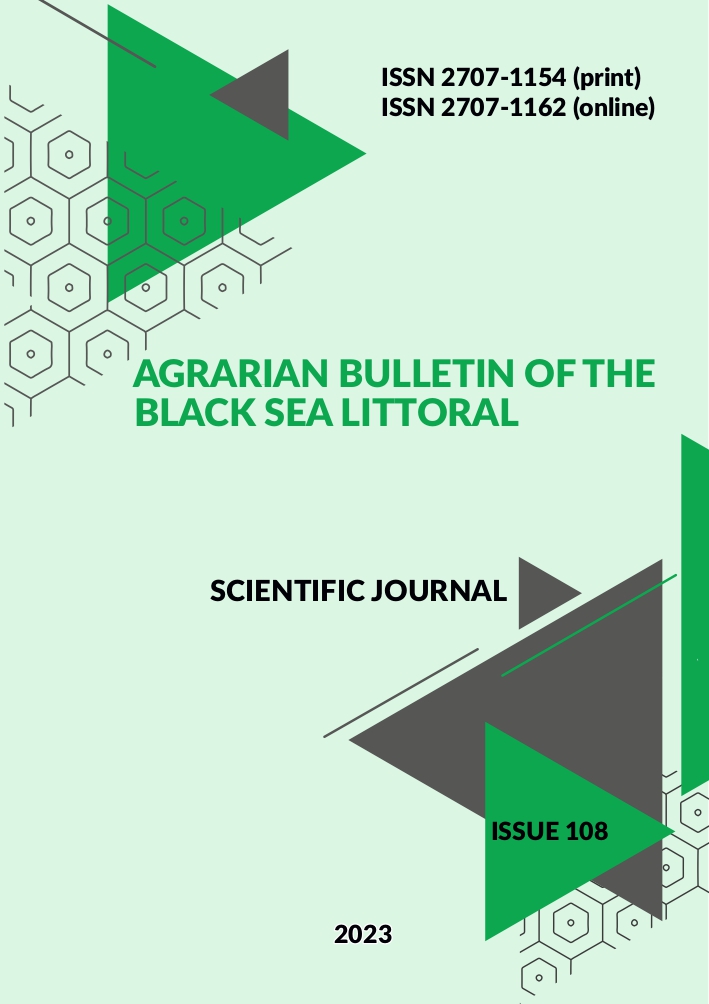PATHOGENETIC ASPECTS AND PATHOMORPHOLOGICAL CHANGES IN UROGENIC PYELONEPHRITIS
DOI:
https://doi.org/10.37000/abbsl.2023.108.14Keywords:
dog, genitals, dermatitis, pyelonephritis, myocarditis, hepatitis, urogenic, hemolysisAbstract
According to the results of the post-mortem examination of the corpse of the domestic dog, the following were diagnosed: dermatitis; balanoposthitis, prostatitis; urethritis, cystitis, pyelonephritis, nephritis; alterative myocarditis, endocarditis; venous hyperemia of the lungs; chronic alternative hepatitis; pancreatitis; atrophy of the spleen; chronic lymphanodulitis (exacerbation period); hemorrhagic diathesis of serous membranes (trachea, epicardium, bladder, liver), lymph nodes, thymus; amputated stump of the pelvic limbs in the area of the distal and middle phalanx of the fingers, hyperkeratosis; catarrhal enteritis, intestinal flatulence, worm infestation. Significant pathomorphological changes in the urogenital tract, which included pyelonephritis, balanoposthitis, epididymitis, urocystitis, urethritis, make it possible to assume that the genitourinary system was the primary focus of the infectious process. Further spread of the infectious agent by hematogenous route led to secondary lesions of various internal organs. Chronic urogenic (ascending) pyelonephritis led to the development of chronosepsis. Multiple organ failure led to intoxication of the body with the development of blood hemolysis. A detailed analysis of pathomorphological changes and pathogenetic mechanisms of disease-causing processes that led to them is the main purpose of this work.
References
Arenas, C. (2017). Canine acute renal failure. Veterinary Times, 47(3), 22-23
Scott JES. (1964) an Experimental Study of Urinary Infection and Vesico–Ureteric Reflux. British Journal of Urology, 36, 501-509
Harrison L, Cass A, Bullock B, Boyce W, Cox C. (1973) Experimental pyelonephritis in dogs Result of urinary infection and vesicoureteral reflux. Urology, 1, 439-443
Kelly DF, Lucke VM, McCullagh KG. (1979) Experimental pyelonephritis in the cat. 1. Gross and histological changes. Journal of Comparative Pathology, 89, 125-139
Bouillon J, Snead E, Caswell J, Feng C, Hélie P et al. (2018) Pyelonephritis in Dogs: Retrospective Study of 47 Histologically Diagnosed Cases (2005-2015). Journal of Veterinary Internal Medicine, 32, 249-259
Wong C, Epstein SE, Westropp JL. (2015) Antimicrobial Susceptibility Patterns in Urinary Tract Infections in Dogs (2010-2013). Journal of Veterinary Internal Medicine, 29, 1045-1052
Wettimuny SG. (1967) Pyelonephritis in the dog. Journal of Comparative Pathology, 77, 193-197
Jergens AE, Miles KG, Turk M. (1988) Bilateral pyelonephritis and hydroureter associated with metastatic adenocarcinoma in a dog. Journal of the American Veterinary Medical Association, 193, 961-963
Lewis DC, Adamson DR, Jacobs KA, Lamb WA. (1988) Pyelonephritis, nephrolithiasis and perinephric abscessation in a dog. Australian veterinary journal, 65, 195-196
Hylands R. (2006) Veterinary diagnostic imaging. Retroperitoneal abscess and regional cellulitis secondary to a pyelonephritis within the left kidney. The Canadian veterinary journal = La revue veterinaire canadienne, 47, 1033-5
Choi J, Jang J, Choi H, Kim H, Yoon J. (2010) Ultrasonographic features of pyonephrosis in dogs. Veterinary Radiology and Ultrasound, 51, 548-553
Vaden SL, Levine J, Breitschwerdt EB. (1997) A retrospective case-control of acute renal failure in 99 dogs. Journal of Veterinary Internal Medicine / American College of Veterinary Internal Medicine, 11, 58-64
Legatti SAM, Dib R El, Legatti E, Botan AG, Camargo SEA et al. (2018) Acute kidney injury in cats and dogs: A proportional meta-analysis of case series studies. PLoS ONE, 13
Foster JD, Krishnan H, Cole S. (2018) Characterization of subclinical bacteriuria, bacterial cystitis, and pyelonephritis in dogs with chronic kidney disease. Journal of the American Veterinary Medical Association, 252, 1257-1262
Lamoureux, A., Da Riz, F., Cappelle, J., Boulouis, H. J., Benchekroun, G., Cadoré, J. L., ... & Maurey, C. (2019). Frequency of bacteriuria in dogs with chronic kidney disease: A retrospective study of 201 cases. Journal of Veterinary Internal Medicine, 33(2), 640-647
Mayer-Roenne B, Goldstein RE, Erb HN. (2007) Urinary tract infections in cats with hyperthyroidism, diabetes mellitus and chronic kidney disease. Journal of Feline Medicine and Surgery, 9, 124-132
Hindar C, Chang Y, Syme HM, Jepson RE. (2020) The association of bacteriuria with survival and disease progression in cats with azotemic chronic kidney disease. Journal of Veterinary Internal Medicine, jvim.15918
Zon H. A., Skrypka M. V., Ivanovsʹka L. B. (2010) Patolohoanatomichnyy roztyn tvaryn : navch. posib. Donetsʹk : TOV «Tarkus», 222.


